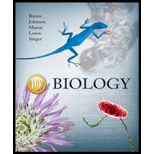
Concept explainers
Which of the following cavities would contain your stomach?
a. Peritoneal
b. Pericardial
c. Pleural
d. Thoracic
Introduction:
The space between the parietal peritoneum and visceral peritoneum is called a peritoneal cavity. The peritoneal cavity is filled with peritoneal fluid, which is composed of electrolytes, leukocytes, antibodies and water. This fluid has lubrication and anti-inflammatory properties.
Answer to Problem 1U
Correct answer:
The peritoneal cavity extends from the diaphragm to the floor of the pelvis. It has two divisions; abdominal cavity and pelvic cavity. Therefore, option a. is correct.
Explanation of Solution
Reason for the correct statement:
The peritoneal cavity is a potential space between the parietal peritoneum, which lines the abdominal wall, and the visceral peritoneum, which envelopes the abdominal organs. It is present in the stomach.
Option a. is given as “peritoneal”.
As the “peritoneal cavity surrounds the abdominal organs such as the stomach, liver, gallbladder, pancreas, spleen, kidneys intestine, and ovaries in (female)”, it is the right answer.
Hence, option a. is correct.
Reasons for the incorrect statements:
Option b. is given as “pericardial”.
Pericardial cavities enclose the heart in humans. Therefore, it is a wrong answer.
Option c. is given as “pleural”.
Pleural cavities house the lungs in humans. Therefore, it is a wrong answer.
Option d. is given as “thoracic”.
The thoracic cavity is subdivided into the pleural cavity that houses the lungs, mediastinum that surrounds the thoracic organ, and pericardial cavity that encloses heart. Therefore, it is a wrong answer.
Hence, options b., c., and d. are incorrect.
Conclusion:
The peritoneal cavity is subdivided into; abdominal cavity that contains stomach, liver, gall bladder, spleen, small and large intestine, kidney and ureters, and pelvic cavity that contains bladder, the terminal end of the large intestine and internal reproductive organ.
Want to see more full solutions like this?
Chapter 42 Solutions
Biology
- Explain: Healthy Cell Function Overview→ Briefly describe how a healthy cell usually works: metabolism (ATP production), pH balance, glycogen storage, ion transport, enzymes, etc. Gene Mutation and Genetics Part→ Focus on the autosomal recessive mutation and explain: How gene mutation affects the cell. How autosomal inheritance works. Compare the normal and mutated gene sequences simply. → Talk about possible consequences of a faulty hydrolytic enzyme.arrow_forwardCan you fill out those termsarrow_forwardExplain down bellow what happens to the cell: Decreased pH in mitochondria Increased ATP Decreased pH in cytosol Increased hydrolysis Decreasing glycogen and triglycerides Increased MAP kinase activity Poor ion transport → For each one:→ What normally happens?→ What is wrong now?→ How does it mess up the cell?arrow_forward
- An 1100 pound equine patient was given 20 mg/kg sucralfate 3 times a day, 2.8 mg/kg famotidine twice a day, and 10mg/kg doxycycline twice a day. Sucralfate comes as a 1 gm tablet, famotidine as 20 mg tablets, and doxycycline as 100mg tablets. All are in bottles of 100 tablets.How many total mg are needed for the patient and how many tablets of each would be needed to provide each dose?How many bottles of each would be needed to have available if this patient were to be on this drug regimen for 5 days?arrow_forwardThe patient needs a solution of 2.5% dextrose in Lactated Ringer’s solution to run at 75 ml/hr for at least the next 12hours. LRS comes in fluid bags of 500 ml, 1 Liter, 3 Liters and 5 Liters. How can a 2.5% solution be made by adding50% dextrose to the LRS?arrow_forward“Gretchen” was a 68-pound canine who came to the VMTH as small animal surgery patient. She receivedacepromazine, 0.2 mg/kg from a 10 mg/ml solution and oxymorphone, 0.08 mg/kg from a 1 mg/ml solution before surgery.What are the mechanisms of action of acepromazine and oxymorphone? Why would they be given together?How many mg provide each dose and how many ml of each of these solutions were given?arrow_forward
- After surgery, “Gretchen” was put on carprofen, 1 mg/pound bid (twice a day). The tablets come in 25, 75 and 100 mgsizes. Which size tablet would be appropriate?What is the mechanism of action of carprofen?An outpatient prescription was written for her so she would have enough for 10 days. How many tablets did she need?What information needs to be on her out-patient prescription?arrow_forwardJoden Koepp olor in chickens is due to incomplete dominance. BB = Black chicken, WW = White BLOOD TYPES Arhite chicken is In humans, Rh positive blood is dominant (R) over Rh negative blood (r). A man with type 0, Rh positive blood (whose mother had Rh negative blood), marries a woman with type AB, Rh negative blood. Several children were born. is? R R Genotypes Phenotypes RRR RR Rr Rr 4/16 RR R RR RK Rr Rr 4/16 rr 3/4 Rh posi 1/4 Rh negu 1/2 Rr rr rr rrrr 88 888 75 e genotype of the man? the genotype of the woman? The mother of the man had type AB blood.arrow_forwardPlease indentify the unknown organismarrow_forward
 Medical Terminology for Health Professions, Spira...Health & NutritionISBN:9781305634350Author:Ann Ehrlich, Carol L. Schroeder, Laura Ehrlich, Katrina A. SchroederPublisher:Cengage Learning
Medical Terminology for Health Professions, Spira...Health & NutritionISBN:9781305634350Author:Ann Ehrlich, Carol L. Schroeder, Laura Ehrlich, Katrina A. SchroederPublisher:Cengage Learning
 Comprehensive Medical Assisting: Administrative a...NursingISBN:9781305964792Author:Wilburta Q. Lindh, Carol D. Tamparo, Barbara M. Dahl, Julie Morris, Cindy CorreaPublisher:Cengage Learning
Comprehensive Medical Assisting: Administrative a...NursingISBN:9781305964792Author:Wilburta Q. Lindh, Carol D. Tamparo, Barbara M. Dahl, Julie Morris, Cindy CorreaPublisher:Cengage Learning





